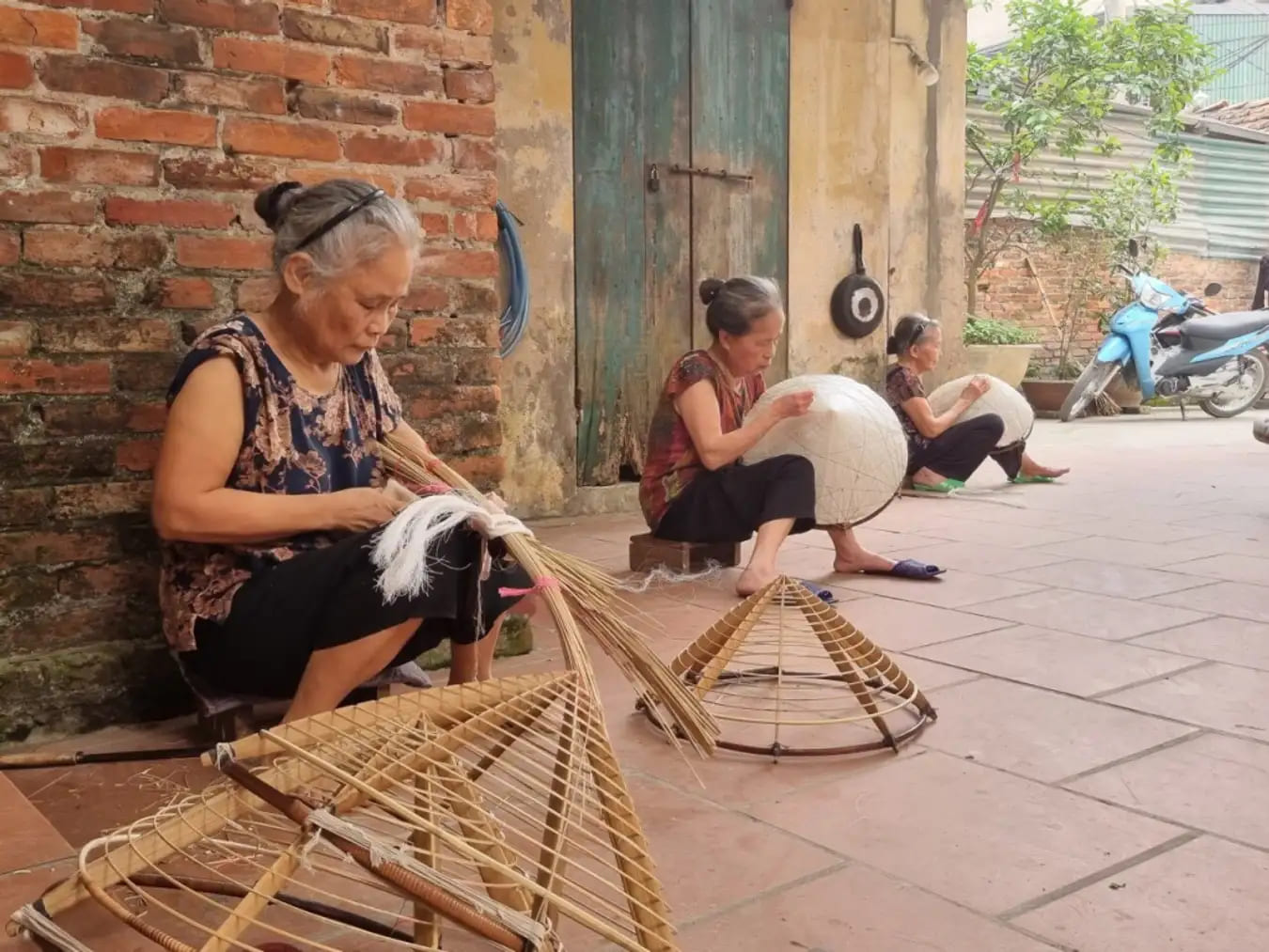
1. Introduction to Bell hat village
Where does Chuong Village make hats?
Bell Hat Village is located in Quoc Trung commune, Thanh Oai district, about 30 km from the center of Hanoi capital. Chuong village is often known by another name as Thanh Oai conical hat village with an area of over 481 hectares including 8 residential villages: Tay Son, Lien Tan, Quang Trung, Ma Kieu, Chung Chinh, Tan Tien, Tan Dan 1 and Tan Dan 2. Chuong Village has two directions: Highway 21B to the east of the village boundary and the Day River dyke road to the west of the village boundary.
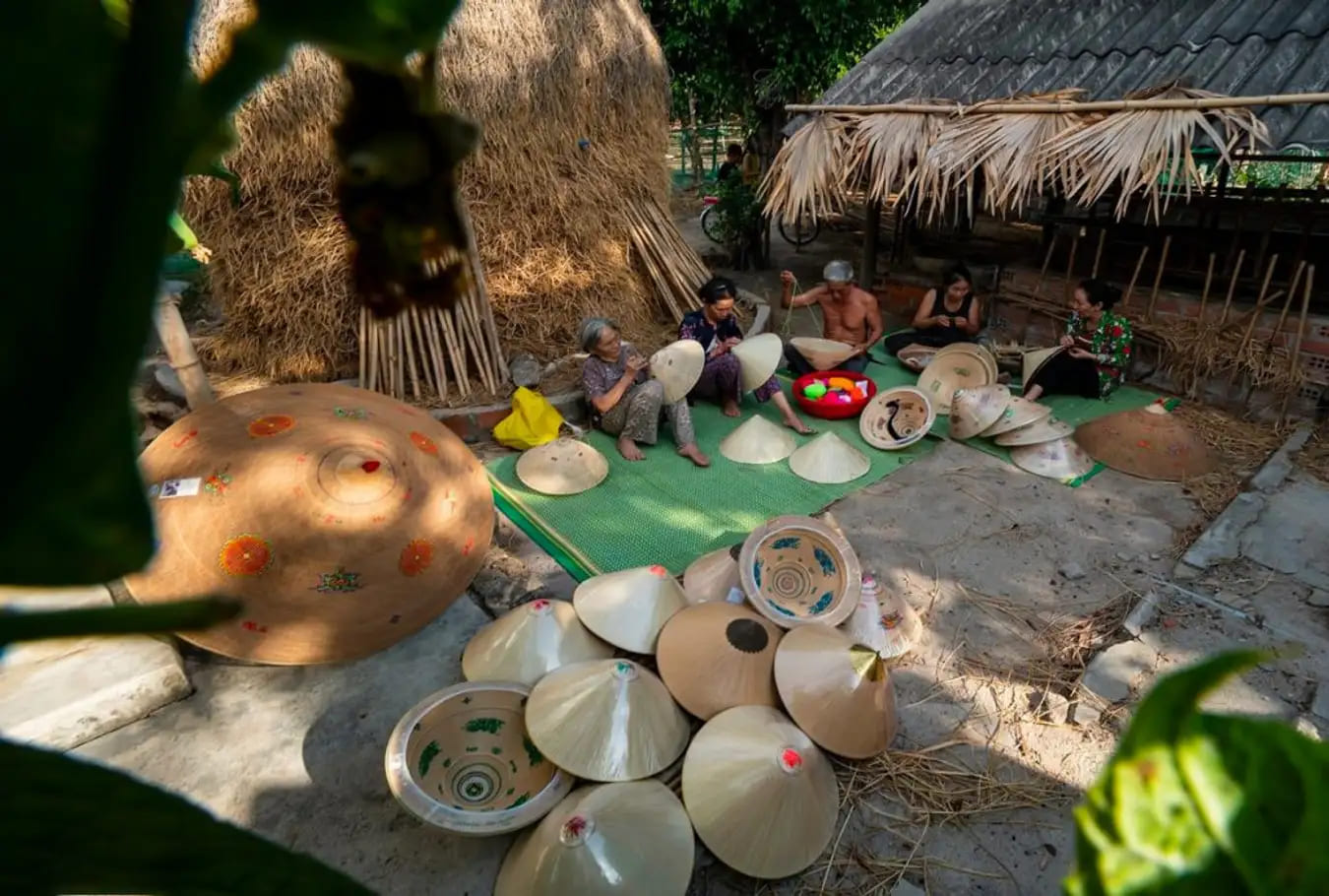
History of the Bell hat craft village
As a long-standing craft village in Hanoi, no one knows exactly what year Chuong village makes specific hats. However, according to the elders in the village, since the 8th century, the village began producing hats. At that time, Chuong village was called Trang Thi Trung, specializing in making all kinds of hats for almost all different classes in society.
2. What's special about bell village hats?
Coming to Chuong village, you can directly admire the process of making conical hats, which is a traditional profession and not a business, so no one hides their profession. The main material to make a conical hat is fresh palm leaves imported from some provinces of Quang Binh and Quang Tri, while the thread and hat frame are woven from bamboo slats available locally.
Fresh palm leaves are quite heavy and have a high content, so workers need to dry them in the sun for about 3 days to evaporate the water before starting production. The next step is to process the leaves, which people call turning the leaves to make them drier and softer. Next, the leaves must be dried and dried one last time to finish processing the leaves. At this time, young palm leaves will change from green to yellow.
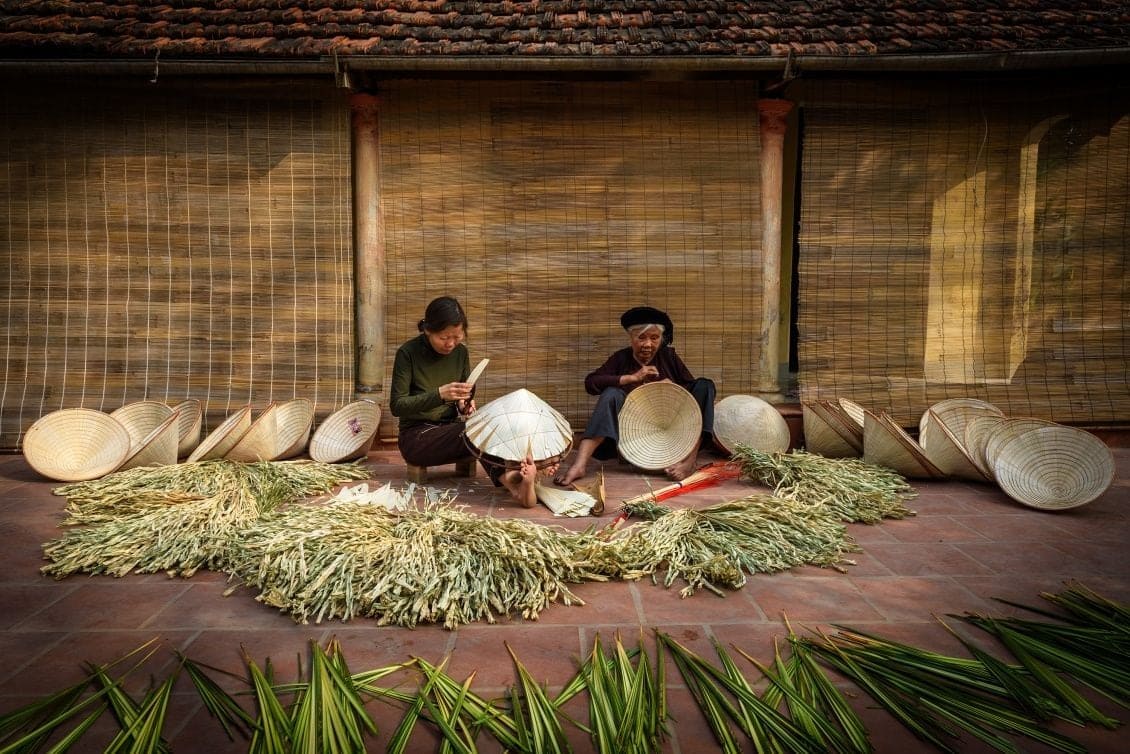
To create a beautiful hat, you first need a solid frame. The frame is mainly woven from bamboo and this material is abundant along the banks of the Day River dike. The worker needs to wrap 16 inner rings layered from top to bottom according to a certain size. The next steps are to sew the leaves to the frame and weave the cone. The talent of the workers of Chuong village is that the wire connections are hidden with each delicate thread.
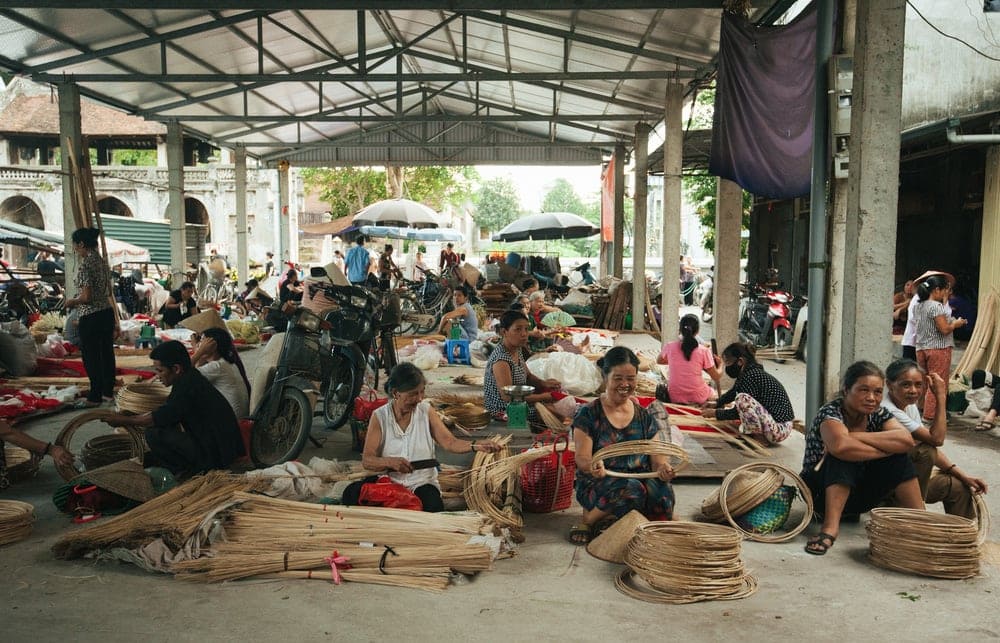
The string is woven along the needle lines with 16 layers of loops to create a new hat. When the hat is finished knitting, people heat it with a match to make the hat's color white and keep it from being moldy. Or you can also brush oil on the outside to make the hat bright, shiny and evenly colored. While making the hat, the girls of Chuong village decorate it further by pasting flower patterns with colorful paper on the body of the hat. More sophisticated is to use colored thread to sew diagonally at two opposite points in the heart of the hat so that the hat strap can then be attached with soft, colorful silk strips, enhancing the charm of each girl under the brim of the hat.
3. What's good about traveling to Thanh Oai Bell Hat Village?
Thanh Oai Bell Hat Village in Ha Tay has a history of over 1,000 years with many ups and downs, so it has a diverse heritage fund with forms including temples, pagodas, palaces, shrines, family churches, parish churches, ancient wells and families following traditional crafts. Coming here, in addition to discovering the ancient craft of making hats in the bell village, visitors can also experience many other activities.
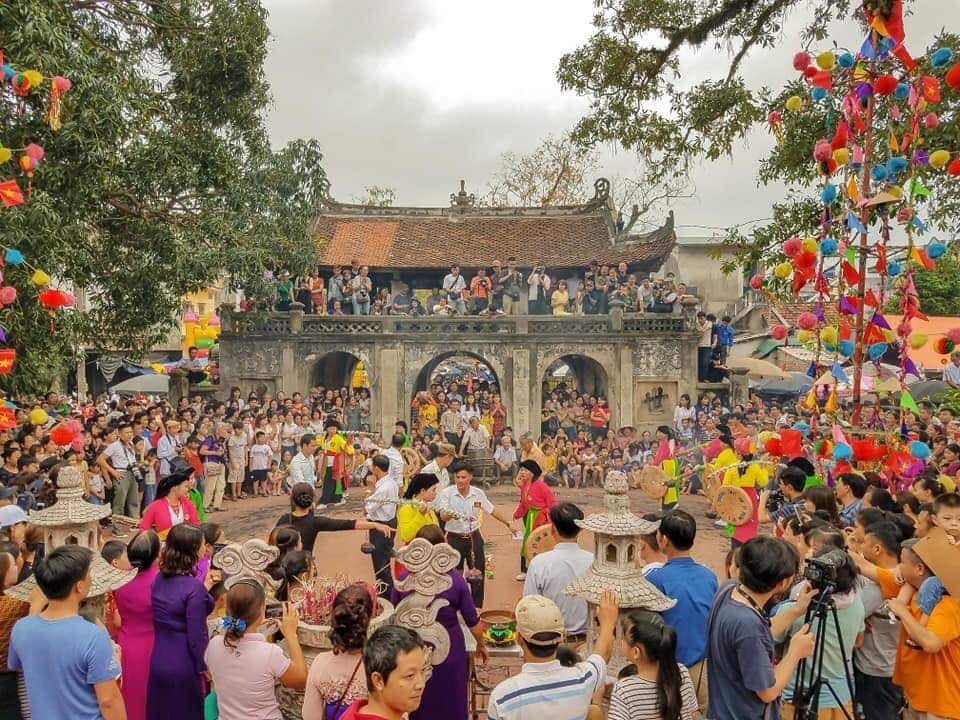
Participate in festivals of the Bell hat craft village
According to the festival committees and elders in the village, the biggest annual festival of Chuong Conical Hat village is the festival on the 10th day of the third lunar month. This festival will be held for three days from March 9 to 11. According to people's tradition, every 5 years there will be a large procession from one end of the village to the other.
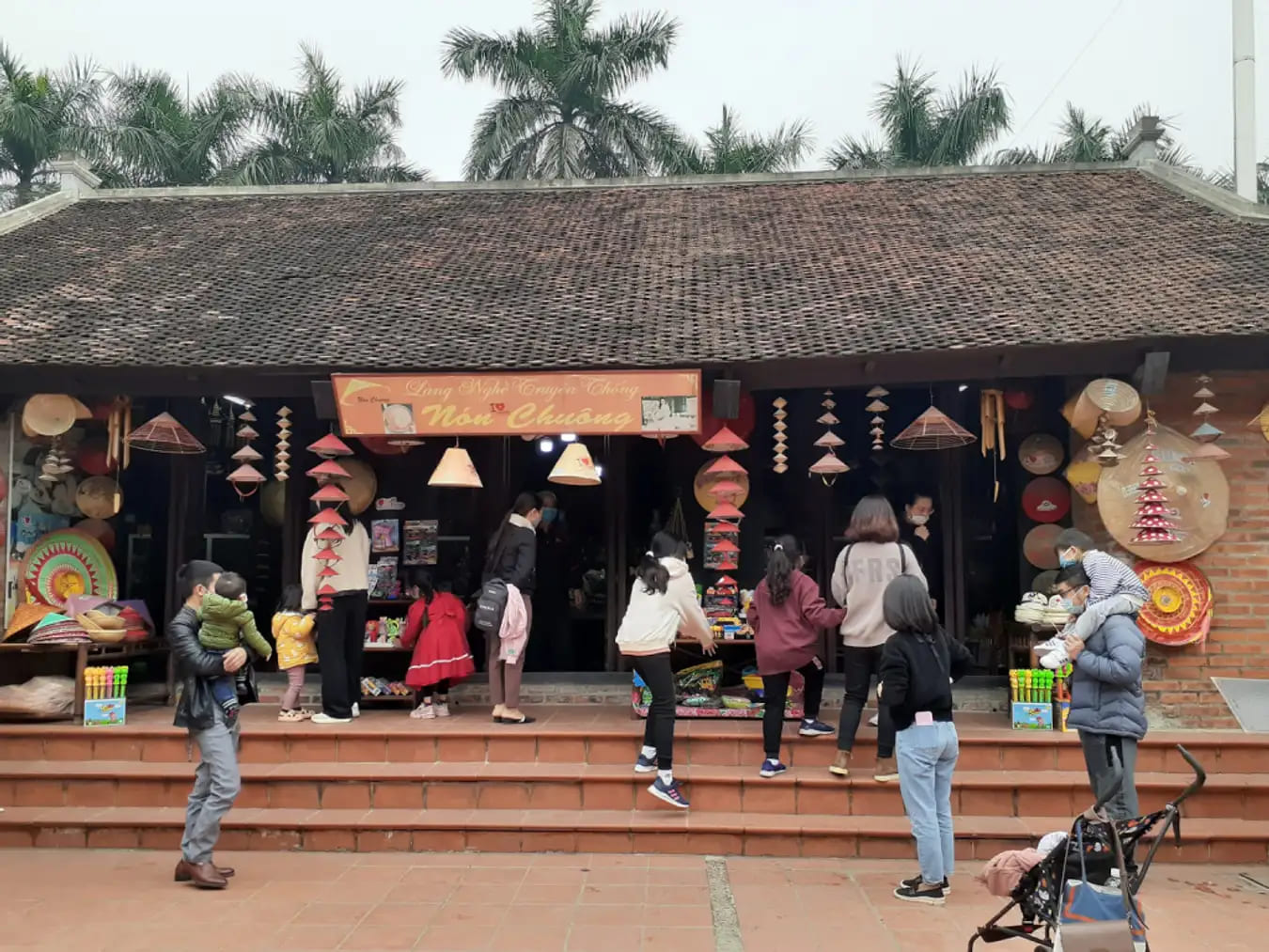
In addition, a unique feature in Chuong village is also the Fair. Chuong village fair is usually held around the 10th day of the first lunar month each year and is also the largest fair of the old Ha Dong province. From then until the 10th day of the third lunar month is the village festival, which is also the occasion for a big fair.
According to the flow of history, in the past, the market was not simply a place to buy and sell goods but a place where many folk cultural activities in the region converged and took place. Talking about the festival at Chuong market, the ancients had a folk song:
“On the tenth day, go to Chuong market to play.
Watching the chess game, people watching the rice bowl competition."
The above folk song shows that the 10th Bell Market is a place where tourists can go out and watch the unique folk games of artistic chess and rice blowing competition.
Bell Market - A destination not to be missed when coming to Bell hat village
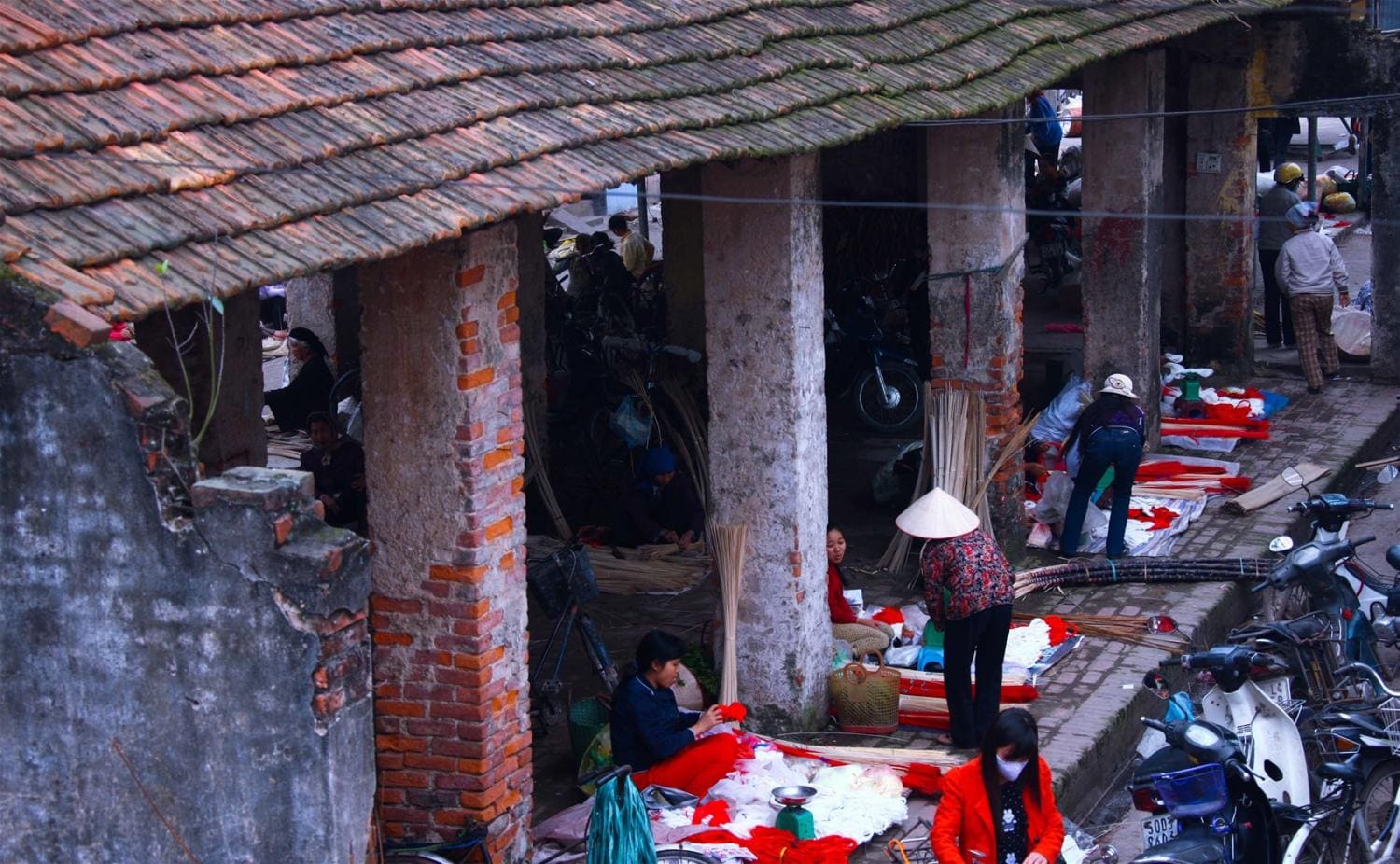
Chuong village market is open every day, especially the hat market has six sessions a month, on the 4th, 10th, 14th, 20th, 24th and 30th of the lunar calendar. The market mainly sells hats and some hat-making materials. Chuong village market opened quite early, at 6 am there were already many people in the village coming out to buy. The atmosphere around the market and houses is excited to bring their family's items here to sell. The market opens early, is crowded and bustling, but quickly disperses after about 3 hours. People who come to the market often go quite early. Those who like to visit must try to arrive early in the morning to enjoy the bustling atmosphere of the hat market. Visitors to Chuong village, present at the hat markets, will be very interested in this unique culture. It's unclear when, but for many generations, the people of Chuong village have kept this market routine. This is a unique value identity of Chuong village.
Visit Chuong Village Communal House
Chuong village communal house was built a long time ago in the year of Giap Ngo 1894, under the reign of King Thanh Thai the 6th. Chuong village communal house is located in a beautiful location quite close to the national highway, with a special "foreign domestic" style architecture. Nguyen Dynasty museum, including the Central Palace, the Hau Palace and Dai Bai.
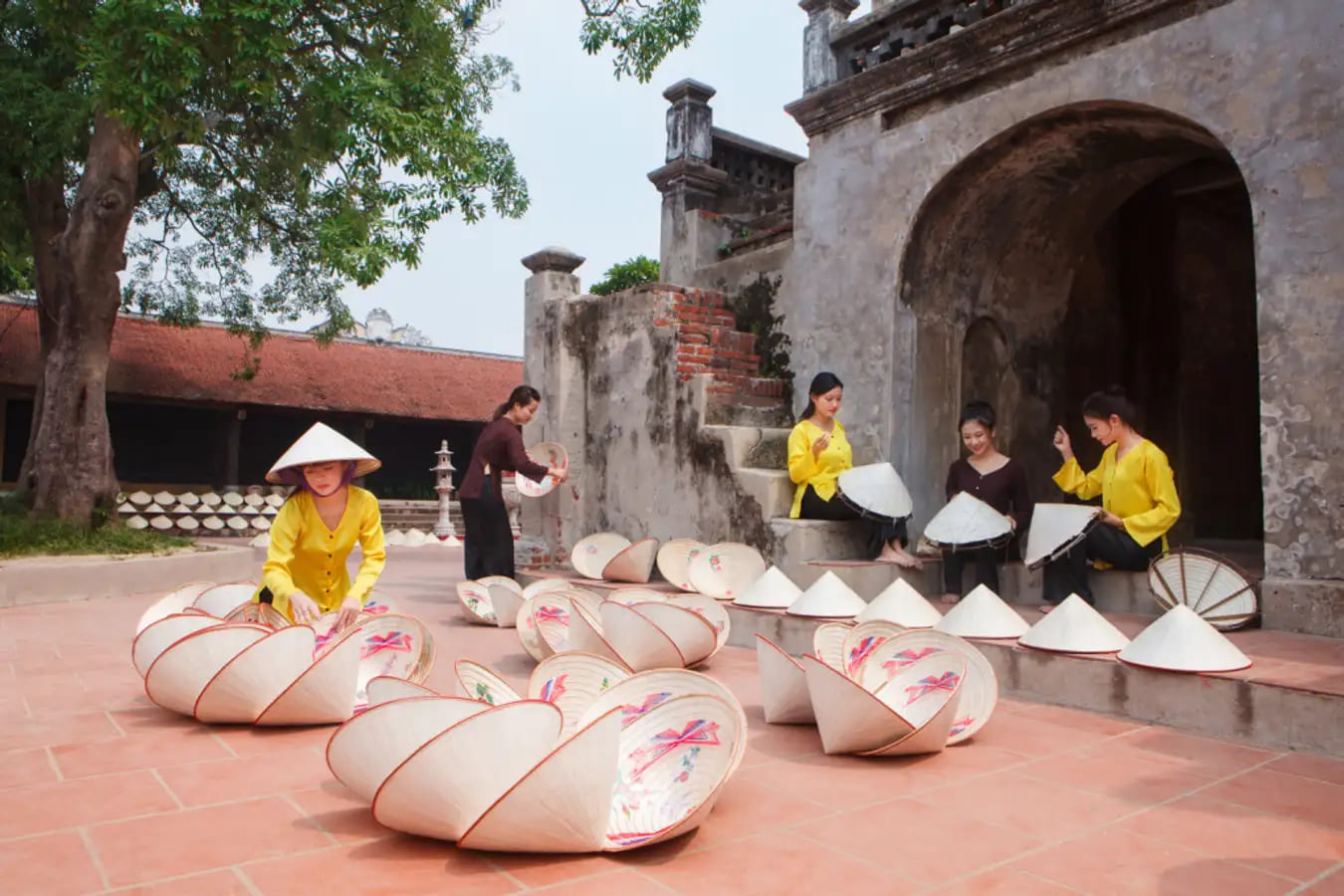
Through the four-pillar style Nghi Mon gate and the large yard at Chuong village communal house, visitors will be overwhelmed by the architecture of the Great Temple. The supporting column system at the Great Temple of Chuong village is all made from old ironwood trees with a solid core, interwoven with delicately carved panels of dragons and four precious gems (dragon ly, phoenix - chrysanthemum, bamboo). On the wall in front of the communal house's yard, there are 3 tigers, expressing generous elements of traditional folk art. The Central Palace and the Rear Palace of Chuong village have a similar structure, built in a two-storey roof style. The communal house of Chuong village still preserves and displays many ancient horizontal plates, scrolls, and couplets...
Stroll around Chuong hat village pagoda
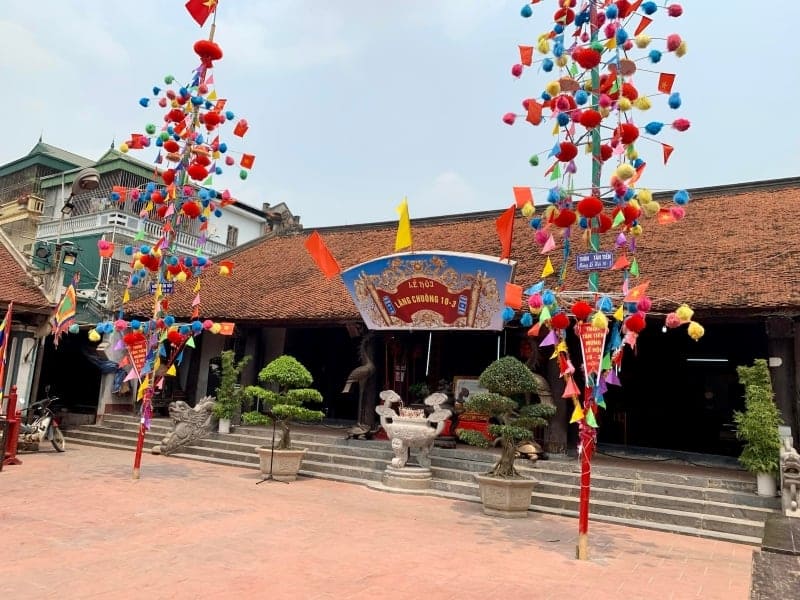
Bell Hat Village has an ancient, time-stained look typical of ancient villages in Hanoi. From the small alleys to each house with old tiled roofs, it creates a nostalgic and peaceful feature in the Northern countryside. This place attracts tourists because it is an address with many virtual living corners. Any angle, just hold up the camera and you can take a set of beautiful, sparkling virtual photos.
